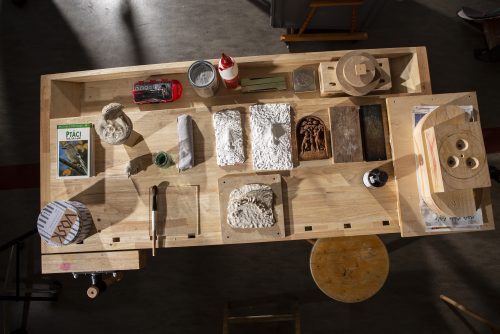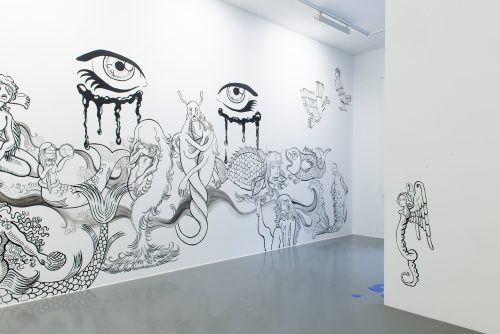
Ian Waelder
cadence

Ian Waelder, cadence, exhibition view at carlier | gebauer, Berlin, 2025 Courtesy of the artist and carlier | gebauer, Berlin/Madrid Photo © Andrea Rossetti
Advertisement

Ian Waelder, cadence, exhibition view at carlier | gebauer, Berlin, 2025 Courtesy of the artist and carlier | gebauer, Berlin/Madrid Photo © Andrea Rossetti

Ian Waelder, Sneaker, 2025. Wooden shoe last, air-dry porcelain, wooden structure. 9,5 x 17 x 7,5 cm / 155 x 22 x 7,5 cm (plinth)

Ian Waelder, cadence, exhibition view at carlier | gebauer, Berlin, 2025 Courtesy of the artist and carlier | gebauer, Berlin/Madrid Photo © Andrea Rossetti

Ian Waelder, Background Vehicle (Mouth), 2024–2025. Plotter print on tarp canvas with collaged tissue paper and paint, covered by raw linen with stains of WD-40 oil, air-dry porcelain, marker and diluted ink. 245 x 195 cm

Ian Waelder, cadence, exhibition view at carlier | gebauer, Berlin, 2025 Courtesy of the artist and carlier | gebauer, Berlin/Madrid Photo © Andrea Rossetti

Novelette, 2025. Painted cardboard boxes, objects, air-dry porcelain, pen on paper, magazine cut-out, cardboard shoe interior, metal clips, sheet of glass 31 x 147 x 31 cm

Novelette, 2025. Painted cardboard boxes, objects, air-dry porcelain, pen on paper, magazine cut-out, cardboard shoe interior, metal clips, sheet of glass 31 x 147 x 31 cm

Ian Waelder, cadence, exhibition view at carlier | gebauer, Berlin, 2025 Courtesy of the artist and carlier | gebauer, Berlin/Madrid Photo © Andrea Rossetti

Ian Waelder, From hip to fingertip (Opel upside down), 2022. Remainder of the acrylic resin mould of the Opel Olympia sculpture made in collaboration between the artist and his father, putty on wall, iron rods. 33,5 x 35,5 x 30 cm

Ian Waelder, From hip to fingertip (Opel upside down), 2022. Remainder of the acrylic resin mould of the Opel Olympia sculpture made in collaboration between the artist and his father, putty on wall, iron rods. 33,5 x 35,5 x 30 cm

Ian Waelder, Cadence, 2025. Cardboard floor and suspended cardboard ceiling, hanging LED tube light, irrigation system, waterproof piezo microphone, stereo track (4h 07 min) in loop. Site-specific dimensions.

Ian Waelder, Cadence, 2025. Cardboard floor and suspended cardboard ceiling, hanging LED tube light, irrigation system, waterproof piezo microphone, stereo track (4h 07 min) in loop. Site-specific dimensions.

Ian Waelder, cadence, exhibition view at carlier | gebauer, Berlin, 2025 Courtesy of the artist and carlier | gebauer, Berlin/Madrid Photo © Andrea Rossetti

Cadence (Elastic Piano), 2025. Wooden object from 1999, traces of stains, crumbled inkjet print on paper, foldback metallic clips and sheet of glass. 20 x 39,6 x 9,8 cm

Ian Waelder, cadence, exhibition view at carlier | gebauer, Berlin, 2025 Courtesy of the artist and carlier | gebauer, Berlin/Madrid Photo © Andrea Rossetti
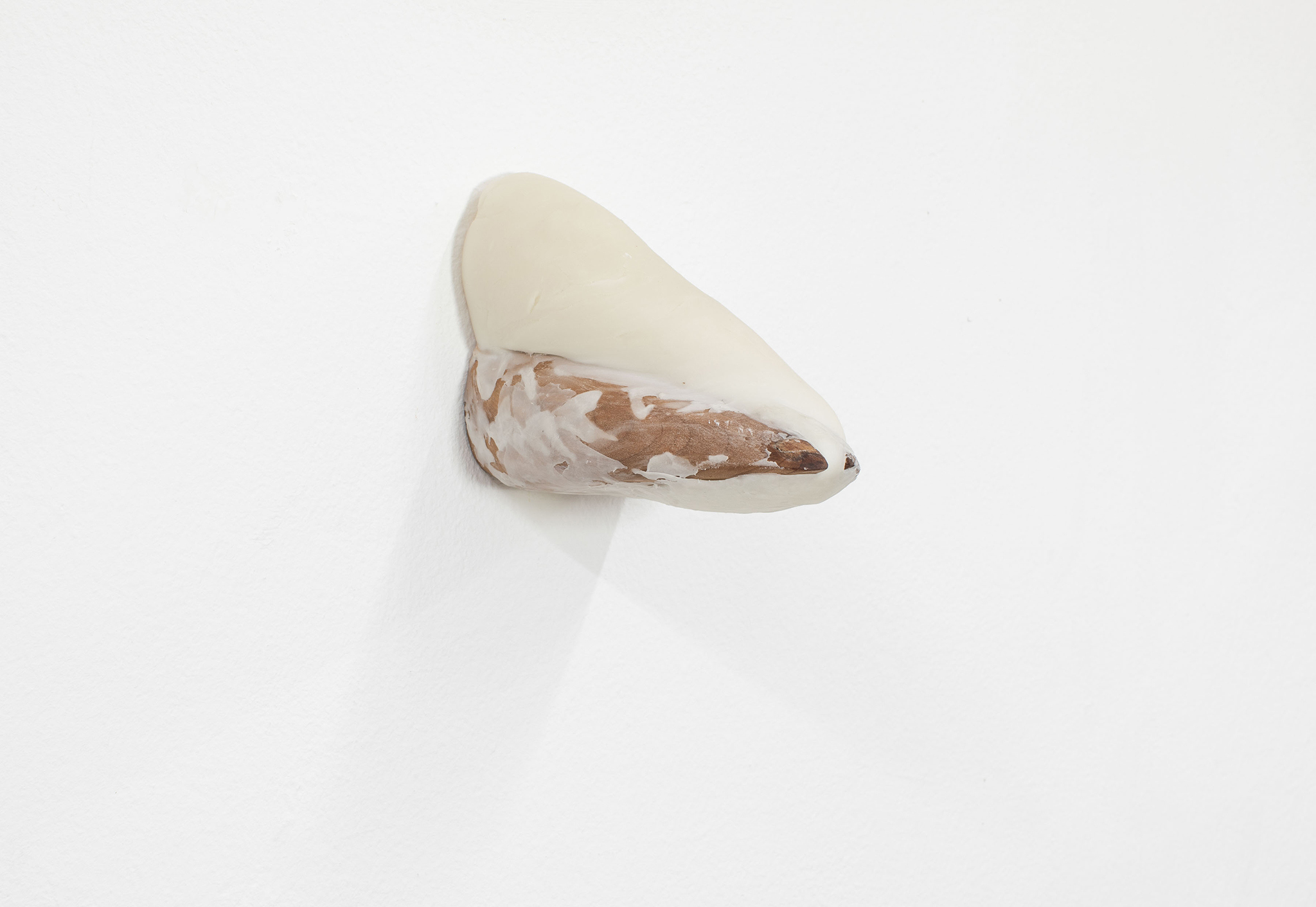
Torsion, 2025. Wooden shoe last, air-dry porcelain 11 x 7,5 x 12,5 cm

To Wait, 2025. Plywood, paint, wood filler, air-dry porcelain, hanger, tissue paper, linen shirt, dry-cleaning plastic bag 148 x 220 x 27 cm
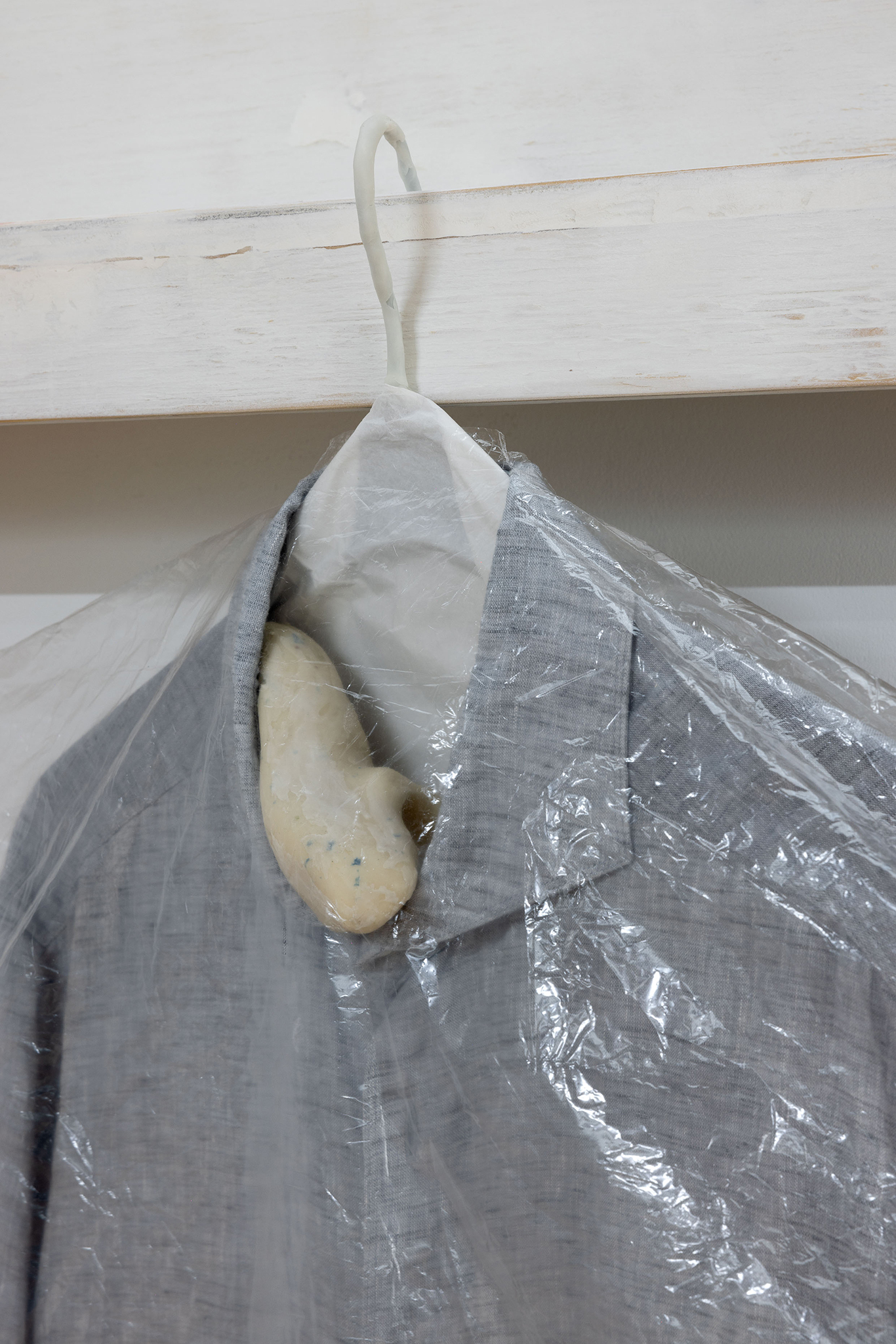
To Wait, 2025. Plywood, paint, wood filler, air-dry porcelain, hanger, tissue paper, linen shirt, dry-cleaning plastic bag 148 x 220 x 27 cm
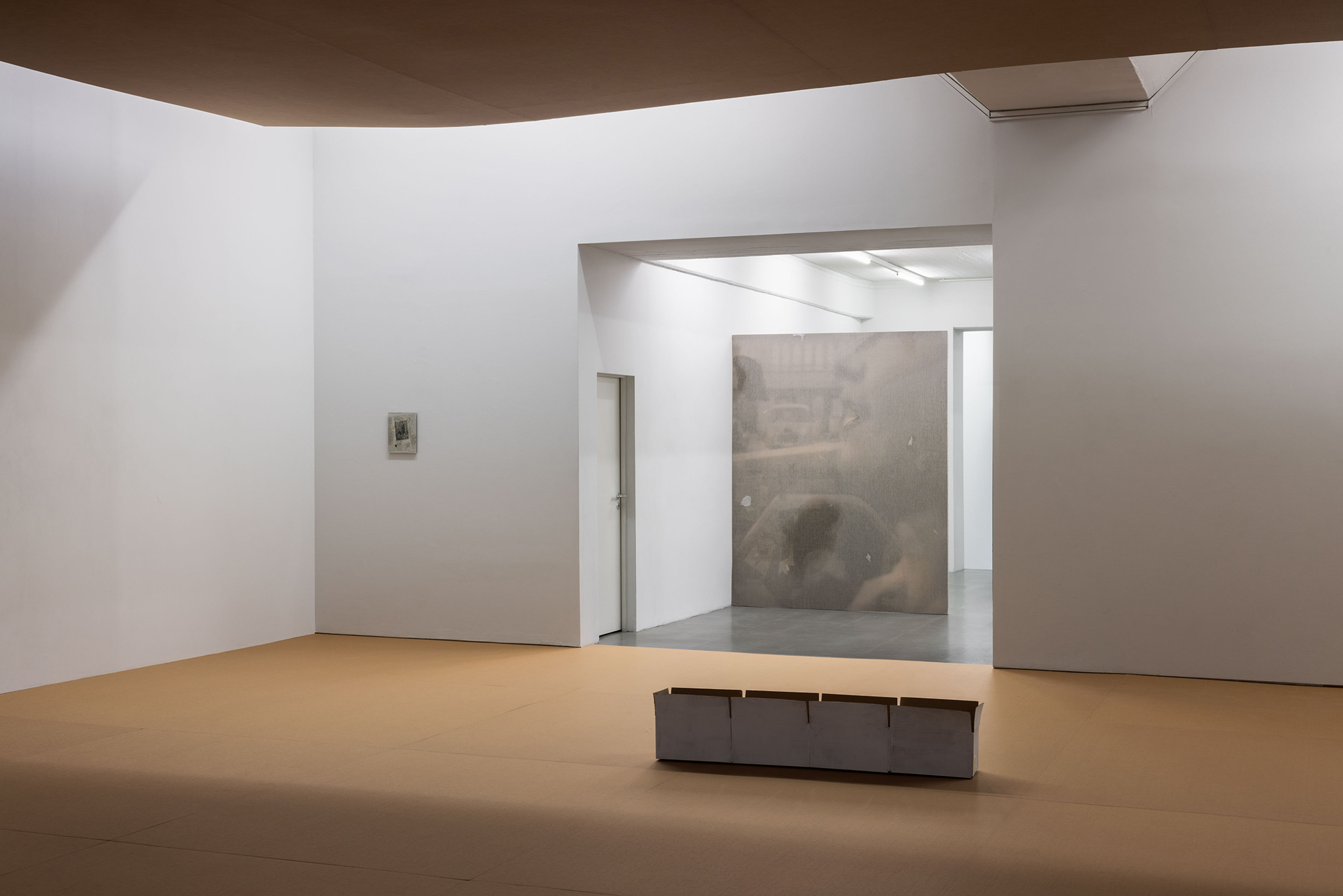
Ian Waelder, cadence, exhibition view at carlier | gebauer, Berlin, 2025 Courtesy of the artist and carlier | gebauer, Berlin/Madrid Photo © Andrea Rossetti
carlier | gebauer, Berlin, is pleased to announce cadence, Ian Waelder’s first solo exhibition with the gallery, opening on Friday, 28 February, from 6 – 9 pm.
For the ancient Greeks, Mnemosyne, mother of the nine muses and Goddess of memory, symbolized the preservation of knowledge, experiences, and emotions. Western culture has a narrow definition of memory. Memory is encapsulated in our lifetime and all that goes beyond it turn into History. This is a reason why, perhaps, we started looking again at other cultures and traditions and at their rites. For many non-Western cultures memory entails the exercise of going back in history. Recalling as many traits as possible and details of that past through collective remembering and oral narratives was a way of visualizing together the ancestors, our predecessors. In rural Spain, where I come from, many families like mine celebrate a rite for the grandparents that all family members attend to pay respects in the day that person died.
Still our culture is mostly oriented towards the future, a bright future, a future of people that can top the pyramid of tasks and achievements better than others. Our culture has erased, therefore, all spaces defined and designed to honor the past and honor the fact that we are a result of the collective effort of many other individuals in the present and in the past. Niches, chapels built into the exterior walls of buildings, marvelous little boxes containing the image of a saint that are passed from one house to another… all the elements designed to care for and ritualize memory — and the emotions of the past — have vanished. It is true that we spend hours searching for guidance on mindfulness and meditation to find ourselves. But it is also true that no contemporary trend has decided to make us reflect on the living conditions, the mottos for life and the values of those who lived before us. The ancestors have appeared more as a way of positioning and capitalizing on certain features of our present. There is a veritable cascade of books in which only the grandparents speak, but in most cases the authors only use their presence, their lives, to enhance their own. We are little vampires of the past. I felt in love with the writing of Milan Kundera because he described, like no one else, the Western ways of capitalizing eternity.
I think you all will relate to the work of Ian Waelder. In a very steady way, he has been affirming his artistic practice –mostly developing installations, sculptures, sound and films—as the embodiment of a site to remember. Before entering the work of perhaps now, after having been there, think about it as a “site” not as a sculpture and not as an installation. A site is a place as seen through our mind. Here the site Ian Waelder has produced is a three-dimensional logical place defined by the intervention in the space and the sculptures that we encounter there. A site possesses the physical rawness given by the location and the intervention he did in this place and a high level of fictionality or abstract-ness since the place is constituted by a sample of elements and realities displayed to ignite our minds.
The visit to this site will take place –or took already place—alone. This is a very important trait. It is intended to intensify the connection between the place/the work and the visitor. Ian, the artist, has gathered his materials because of a personal experience –his life, his memories, his family memories– but also a consequence of his endeavor of creating a freestanding, seemingly independent body of work. A work that has an ambition to expand the presence and social/collective function of sculpture while, as well, being able to name and identify a range of themes, including time travel, nature, perception in a capitalist industrial society, climate….
His work is very inspiring because it always suggests deep analogies between the presence of the viewer and the structure of the work in addressing love relationships, communication, epoch, and narration. It is a piece that demonstrates that the art practice is the best place to absorb and redefine our emotional social life, our views on time and immortality.
Bio:
Ian Waelder (b. Madrid, 1993) is a Spanish-American artist and publisher living in Frankfurt am Main and Mallorca. Waelder is the founder of Printer Fault Press, a publishing house and collaborative platform that provides space for the work of fellow artists, curators and writers.
He graduated in Fine Art studies from the Städelschule in Frankfurt in 2023 as Meisterschüler in the class of Prof. Haegue Yang. He was also a student in the classes of Peter Fischli and Mark von Schlegell.
He is the recipient of the Kunststiftung DZ Bank Förderstipendium 2023/24 and was resident artist at the WIELS Center in 2024. His work has been exhibited at diez, Liste Basel (2024); Super Super Markt, Berlin (2024); carlier | gebauer, Berlin (2024); Neuer Kunstverein, Gießen (2024), Es Baluard Museu d’Art Contemporani, Palma (2023); Kunstverein Wiessen (2023); Delfina Foundation, London (2023); Fundació Antoni Tàpies, Barcelona (2023); Galerie Rolando Anselmi, Rome (2023); Francis Irv, New York (2023); ethall, Barcelona (2022); Nassauischer Kunstverein, Wiesbaden (2021); L21, Palma (2021), Centro Párraga, Murcia (2018), the Finnish Museum of Photography, Helsinki (2018), La Casa Encendida, Madrid (2014), among others. His works are part of the collections of Kunststiftung DZ BANK, Frankfurt am Main; Es Baluard Contemporary Art Museum, Mallorca; and Rothschild & Co, Zürich.
Chus Martínez


